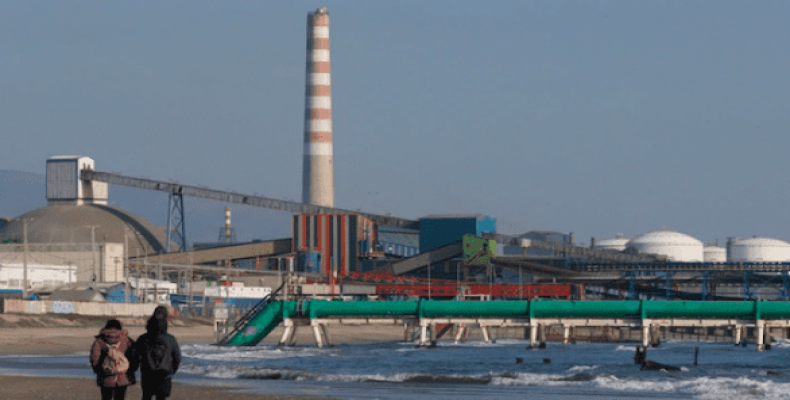Santiago de Chile, October 19 (RHC)-- Greenpeace activists and residents of communities suffering from industrial pollution created a mock hospital ward outside the Chilean presidential palace to demand that the government commit to shutting down coal-fired power plants by 2030.
About 20 people were lying in hospital beds, hooked up to oxygen tanks and covered by sheets “stained” with pollution. The aim of the event was “to show the day-to-day trauma experienced by people in sacrifice zones,” Greenpeace spokesman Mauricio Ceballos told Efe.
“We want to send this message directly to the President of the Republic (Sebastian Piñera) who, while celebrating the COP25 (UN climate conference) at the end of the year in the country, still has done nothing to alleviate the suffering of the population in the zone,” Ceballos said.
Ceballos referred to Quintero, Puchuncavi and Ventanas, three coastal towns in the Valparaiso region that are collectively host to 17 highly polluting factories and power plants.
Recent years have seen a dramatic increase in health problems among residents of the three communities, especially children, the Greenpeace spokesman said.
“What is being done is to protect at all costs the contracts that the firms who operate in those zones have,” he said. “And we as a country are not thinking about the health effects there are in the population and in the effects the emission of all those greenhouse gases has for the planet.”
Katta Alonso, a representative of the Resistance Women of the Sacrifice Zone of Quintero and Puchuncavi, told Efe that she and her neighbors hope to see Piñera “comply with what he has said at the UN,” where the president mentioned those two towns by name and promised to address the pollution issue.
“We need them to shut down the four coal electric plants of AES Gener and the Codelco Ventanas
smelter so we can start to breathe and so our children can live in a clean, pollution-free environment,” she said, adding that youngsters in the area are plagued by headaches, nausea and vomiting.
“More than 2,000 children were poisoned last year,” Alonso said, referring to an incident in August 2018 that remains under investigation.


